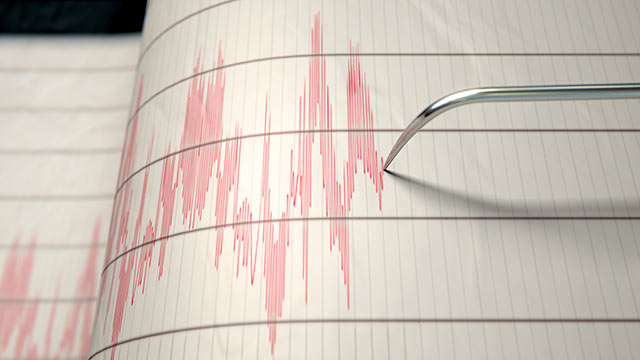Seismology has a Big Data problem. Northwestern University seismologists think everyday citizens are the solution.
This winter, a Northwestern team of students and faculty launched “Earthquake Detective,” an interactive project that solicits help from volunteers to sort through swaths of data from the world’s tens of thousands of seismograms. By sorting and classifying earthquakes, tremors and steady background noise recorded within particularly interesting time windows, volunteers can help researchers better understand seismic events and the conditions under which they occur.
“Classifying this data will help us paint a more complete picture of when larger earthquakes may trigger smaller ones or tremors,” said Suzan van der Lee, a seismologist and professor of Earth and planetary sciences in Northwestern’s Weinberg College of Arts and Sciences. “Then we can learn what conditions are favorable and what factors need to align to allow them to happen, which ultimately also might inform the reverse of how small seismic events interact with big ones.”
Vivian Tang conceived the project after she collaborated for a year with Kevin Chao, a data science scholar in the Northwestern Institute on Complex Systems and an expert in dynamically triggered seismic activity. Data collected from seismograms around the world are already compiled into a gigantic open-access archive. Tang felt inspired when thinking about the hidden insights buried within all that data but overwhelmed by the thought of mining through it all.
“There has been a data explosion in seismology,” said Tang, a seismologist and Ph.D. candidate in Van der Lee’s laboratory. “There’s just too much data to look through, which is why I wanted to start a citizen science project that requests the help of volunteers.”
To make the project user friendly, Tang teamed up with fellow Northwestern Ph.D. candidate Boris Rösler, who wrote computer code that transformed the seismic frequencies into audible pitches. Seismograms continuously record the minute motions of the Earth’s surface with a series of squiggly lines. To an untrained eye, it’s nearly impossible to ascertain which lines are caused by a tremor and which ones are perhaps from a storm, falling tree, roaming animal or a subway train rolling by.
There has been a data explosion in seismology.”
seismologist
By turning these squiggly lines into audio files, the Northwestern team made it much easier for volunteers to classify types of events. All they have to do is listen to the differences among sounds. With an earthquake, for example, there is a sudden release of energy that sounds like a slamming door. A tremor, on the other hand, is a slow release of energy that can sound more like a train rumbling over tracks. Then there’s background noise, which can sound like anything from a whale to “aliens” to a whistle.
After undergoing a short online tutorial, volunteers learn how to classify these sounds and sort them from ambiguous noises caused by construction, strong winds or even loud sports matches.
“With the audio files, volunteers don’t need to be seismologists or geologists,” Tang said. “They can just listen to these files from anywhere and distinguish whether it’s an earthquake, tremor or just background noise.”
“It seems as if our ears can hear a lot more than our eyes can see,” added Van der Lee, who is an affiliate faculty member in CIERA (Center for Interdisciplinary Exploration and Research in Astrophysics), an endowed research center at Northwestern focused on advancing astrophysics studies with an emphasis on interdisciplinary connections.
So far, nearly 900 volunteers are working to classify more than 16,000 sounds. After one file is classified by at least 10 people, then the case is considered closed. The Earthquake Detective team is initially focusing on seismic events in North America but will continue to add audio files to the website as the project grows.
After volunteers classify enough data, seismologists and data scientists can feed the data into seismic models that could help scientists better understand how, where, when and why earthquakes happen.
In addition to Van der Lee, Tang, and Rösler, Earthquake Detective’s team includes Jordan Nelson, JaCoya Thompson, Alice Lucas, Kevin Chao, Zhigang Peng, Michelle Paulsen and Laura Trouille. Tang, Rösler, Nelson, Thompson and Lucas are IDEAS fellows, a National Science Foundation Research Traineeship at Northwestern (grant number DGE-1450006). CIERA hosts the IDEAS grant.


